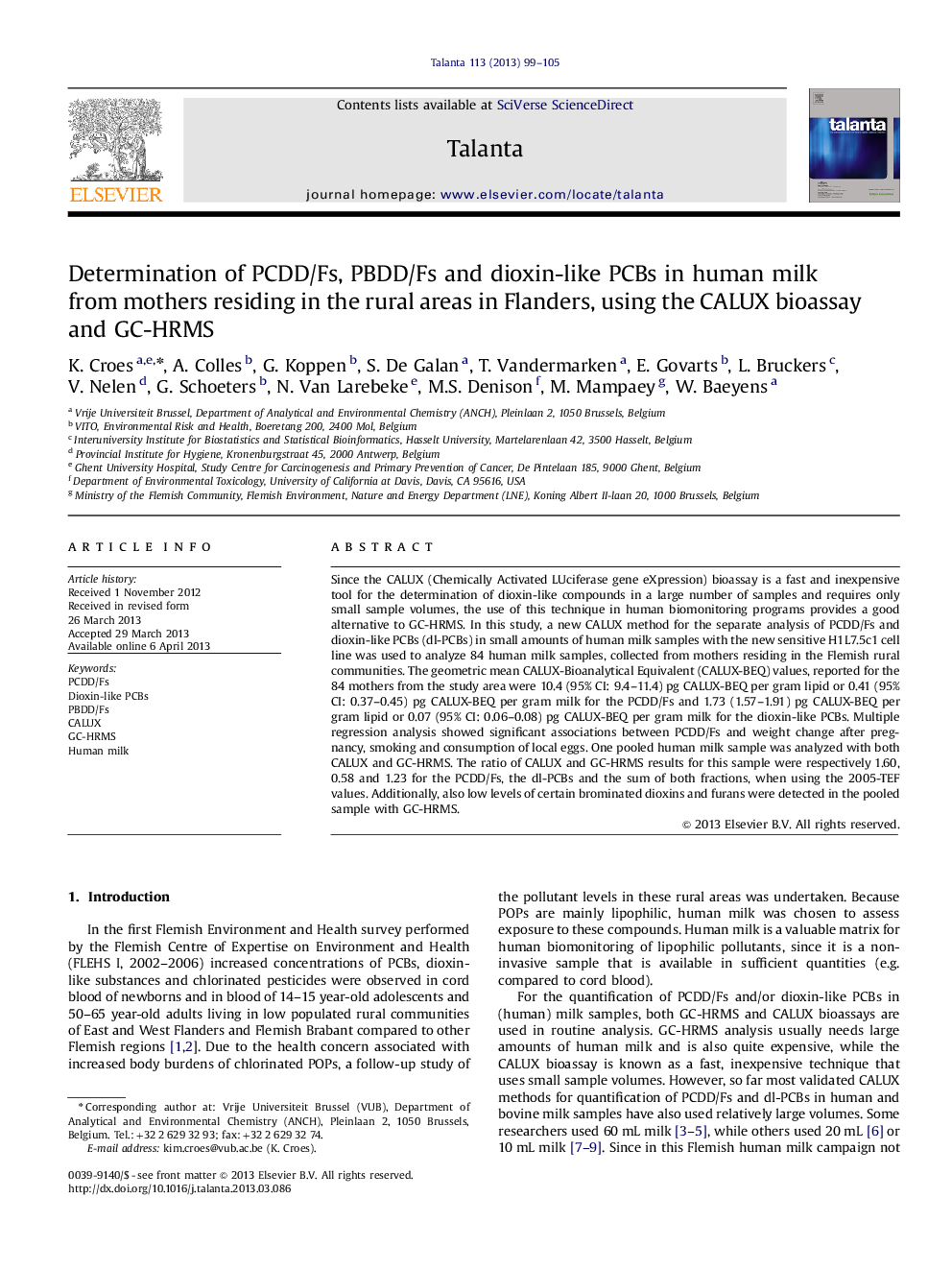| Article ID | Journal | Published Year | Pages | File Type |
|---|---|---|---|---|
| 7681917 | Talanta | 2013 | 7 Pages |
Abstract
Since the CALUX (Chemically Activated LUciferase gene eXpression) bioassay is a fast and inexpensive tool for the determination of dioxin-like compounds in a large number of samples and requires only small sample volumes, the use of this technique in human biomonitoring programs provides a good alternative to GC-HRMS. In this study, a new CALUX method for the separate analysis of PCDD/Fs and dioxin-like PCBs (dl-PCBs) in small amounts of human milk samples with the new sensitive H1L7.5c1 cell line was used to analyze 84 human milk samples, collected from mothers residing in the Flemish rural communities. The geometric mean CALUX-Bioanalytical Equivalent (CALUX-BEQ) values, reported for the 84 mothers from the study area were 10.4 (95% CI: 9.4-11.4) pg CALUX-BEQ per gram lipid or 0.41 (95% CI: 0.37-0.45) pg CALUX-BEQ per gram milk for the PCDD/Fs and 1.73 (1.57-1.91) pg CALUX-BEQ per gram lipid or 0.07 (95% CI: 0.06-0.08) pg CALUX-BEQ per gram milk for the dioxin-like PCBs. Multiple regression analysis showed significant associations between PCDD/Fs and weight change after pregnancy, smoking and consumption of local eggs. One pooled human milk sample was analyzed with both CALUX and GC-HRMS. The ratio of CALUX and GC-HRMS results for this sample were respectively 1.60, 0.58 and 1.23 for the PCDD/Fs, the dl-PCBs and the sum of both fractions, when using the 2005-TEF values. Additionally, also low levels of certain brominated dioxins and furans were detected in the pooled sample with GC-HRMS.
Related Topics
Physical Sciences and Engineering
Chemistry
Analytical Chemistry
Authors
K. Croes, A. Colles, G. Koppen, S. De Galan, T. Vandermarken, E. Govarts, L. Bruckers, V. Nelen, G. Schoeters, N. Van Larebeke, M.S. Denison, M. Mampaey, W. Baeyens,
